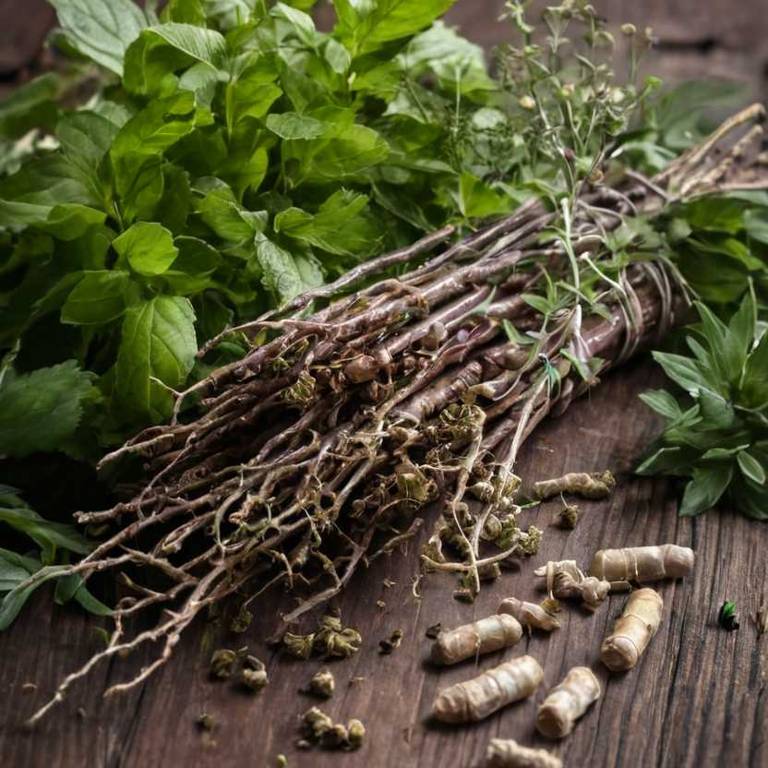By Leen Randell
Updated: Jul 06, 2024
What to know about Betula alleghaniensis (yellow birch) before using it medicinally

Betula alleghaniensis, commonly known as yellow birch, is a herb with a long history of use for its medicinal properties, which have been shown to improve heart health and reduce inflammation in the body.
From a horticultural perspective, yellow birch is a deciduous tree that thrives in cool, moist climates, and is often used in landscaping and forestry for its striking white bark and slender shape. Botanically, Betula alleghaniensis is a member of the Betulaceae family and is characterized by its distinctive papery leaves and catkin-like flowers.
Historically, yellow birch has been referenced in traditional medicine by many indigenous cultures, including the Native American tribes of the northeastern United States and Canada.
This article explains the medicinal, horticultural, botanical, and historical aspects of Betula alleghaniensis.
What are the medicinal properties of Betula alleghaniensis?
Betula alleghaniensis helps with treating digestive issues, such as diarrhea, constipation, and stomach cramps. The plant's bark, leaves, and roots have been used in traditional medicine to soothe irritated tissues and promote wound healing.
The medicinal properties of B. alleghaniensis are attributed to its active constituents, including tannins, phenolic acids, and flavonoids. These compounds have anti-inflammatory, antimicrobial, and antioxidant activities, which contribute to the plant's therapeutic effects.
The bark, leaves, and inner bark of B. alleghaniensis are the most commonly used parts for medicinal purposes. The inner bark is rich in betulin, a triterpenoid with anti-inflammatory and antimicrobial properties, while the leaves contain flavonoids and tannins.
Improper use of B. alleghaniensis can cause side effects such as gastrointestinal upset, allergic reactions, and skin irritation. Ingesting large amounts of the plant can also lead to interactions with other medications, such as blood thinners and diabetes medications.
When using B. alleghaniensis medicinally, precautions should be taken to avoid excessive dosages, potential allergic reactions, and interactions with other medications. Pregnant or breastfeeding women, as well as individuals with kidney or liver disease, should consult with a healthcare professional before using the plant.
What are the horticulural aspects of Betula alleghaniensis?
Betula alleghaniensis grow well in moist, well-drained soils and full sun to partial shade. The optimal pH range for yellow birch is between 5.5 and 6.5. This species can thrive in a variety of soil types, including sand, loam, and clay.
Yellow birch prefers to be planted on the north or east side of slopes to avoid scorching. Planting in the spring or fall is recommended to avoid extreme temperatures. Water regularly during the first year after planting to establish a strong root system. Mulch around the base to retain moisture and suppress weeds.
Yellow birch trees can be harvested for their wood, which is prized for its durability and resistance to decay. Harvesting typically occurs between 80 and 100 years after planting, when the tree reaches a diameter of 24 to 30 inches. Yellow birch can be tapped for its sap, which is used to produce birch syrup.
The most common pests affecting yellow birch include the bronze birch borer, which can cause significant damage, and the birch leafminer, which causes damage through larval feeding. Yellow birch is also susceptible to fungal diseases such as canker, root rot, and leaf spot, often caused by overwatering and poor air circulation. Regular pruning and proper care can help mitigate these issues.
What are the botanical aspects of Betula alleghaniensis?
Betula alleghaniensis is a deciduous tree characterized by its yellow to golden bark, which peels off in thin papery strips. Leaves are simple, alternate, and doubly serrated, with a length of 4-9 cm. Stems are slender, with a brown to reddish-brown color.
The taxonomical classification of Betula alleghaniensis places it in the family Betulaceae, with the genus Betula being its most recent common ancestor. It is a species of the subgenus Chrysobalanus, sharing characteristics with other yellow birches. Its binomial nomenclature is Betula alleghaniensis Britton.
Betula alleghaniensis exhibits variations in its growth habits and leaf morphology, particularly in its response to environmental conditions. The 'Var. minor' variant is smaller, with narrower leaves, whereas 'Betula alleghaniensis var. alleghaniensis' retains the typical leaf shape and size.
Betula alleghaniensis is native to eastern North America, with its range spanning from eastern Canada to the northeastern United States. It inhabits a variety of ecosystems, including boreal forests and boreal transition zones, typically growing in moist to dry areas.
The life cycle of Betula alleghaniensis begins with seed production, as female trees produce catkins. Pollination occurs in spring, followed by fertilization. The seeds mature in late summer to early fall, after which the catkins dry and fall off. New growth begins in spring, as buds swell and leaves emerge.
What are the historical aspects of Betula alleghaniensis?
Betula alleghaniensis is a deciduous tree native to eastern North America. Historically, its bark was used for tanning and making baskets, while its wood was valued for furniture-making and tool handles.
In Algonquian mythology, the yellow birch is associated with the spirit of the forest, said to provide protection from harm and evil. The tree is also mentioned in the stories of the Anishinaabe people, who considered it a sacred being.
The yellow birch is often associated with wisdom, longevity, and resilience in various cultures. Its distinctive bark, which peels off in horizontal layers, has led to its use as a symbol of the cyclical nature of life. In some traditions, the tree is linked to the Ouroboros, the serpent that consumes its own tail.
Historical texts such as the journals of Samuel de Champlain and the writings of Henry David Thoreau mention the yellow birch in detail. The tree was considered a valuable resource by early European settlers, who exploited its wood for various purposes.
Archaeological evidence from the Great Lakes region reveals that the yellow birch was a highly valued tree among ancient indigenous cultures. The discovery of birch bark containers and tools made from the tree's wood has provided insights into the lives and traditions of these communities.